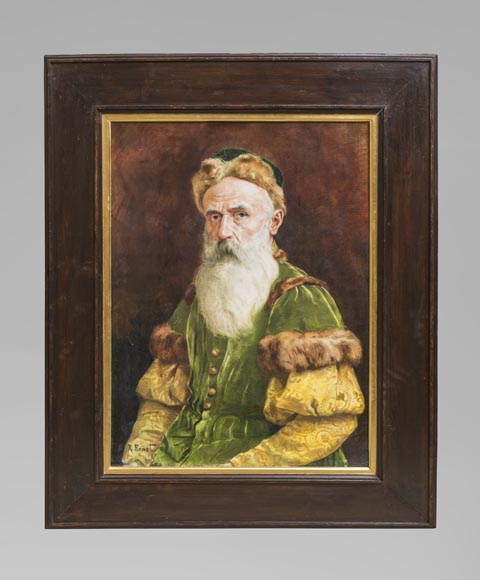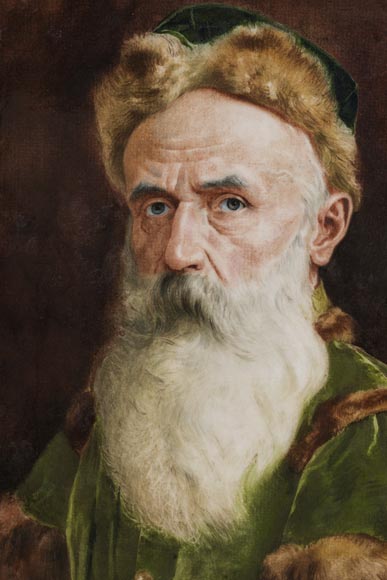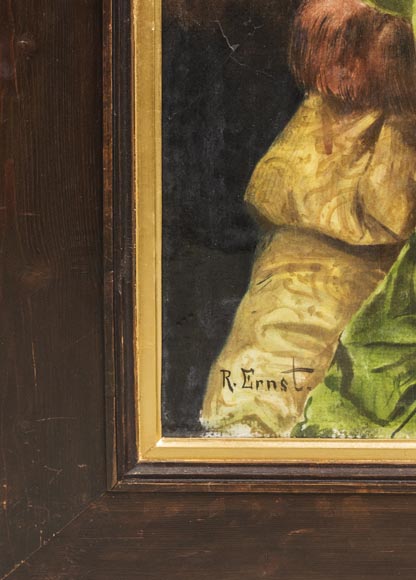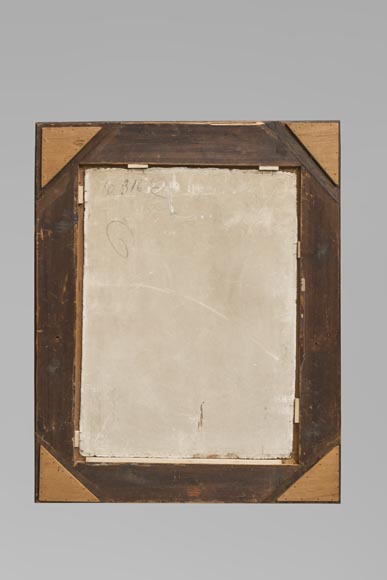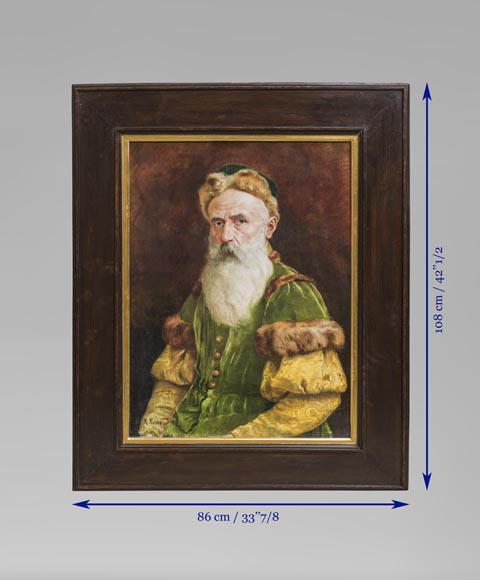Style Other / Ref.11450
Rudolf ERNST (1854-1932) - Portrait of a high-ranking Austro-Hungarian dignitary
Dimensions
Width 33'' ⅞ 86cm
Height 42'' ½ 108cm
Origin:
France, circa 1889
Status:
Good condition
This extraordinary portrait was painted by Rudolf Ernst according to a very particular and very innovative technique. It is indeed painted porcelain including a metallic mesh. The work depicts, on an ocher background, an elderly man, with a long white beard and bushy eyebrows. His gaze - a bluish gray - is fixed on the spectator. Richly dressed, he wears an emerald green velvet doublet embellished with brown fur at collar, armholes and sleeves. These velvet sleeves open on a beautiful gilded fabric (probably silk) puffed on the upper part and tightening above the elbow. He wears a green velvet hat with exposed lapels covered with fur. All these elements indicate the rank of the man represented: no doubt he is a high dignitary or a member of the Austro-Hungarian nobility. In the present state of our research and according to our knowledge, it is difficult for us to give a date to this work but it could have been exhibited at the World’s Fair of 1889 during which the artist was awarded a bronze medal.
Rudolf Ernst is a French-Austrian painter. Born in Vienna in 1854, his father was a painter and architect. He was a member of the Vienna Fine Art Academy where Rudolf Ernst entered as a student in 1869. In 1874, he left the Academy to complete his training in Rome before moving to Paris in 1876. He exhibited regularly, after 1877, at the Salon of French Artists, realizing, at first, genre scenes and portraits. He travels to Spain, Morocco and Turkey, where he paints portraits of Ottoman characters from the royal court. His orientalist paintings are the best known part of his work. He devoted himself to Orientalism in 1885, creating interiors of mosques or harems, chess players, hookah smokers and even beautiful odalisques. Particularly productive in the 1890s, Ernst was successful and received a bronze medal at the World's Fair of 1889 and a medal of honor at the World’s Fair of 1900. From his trip to Constantinople in 1890, he learned how to improve his production of earthenware tiles, a technique he had learned in Paris from Léon Fargue, a ceramist and glassmaker. His faience tiles are not only orientalist: he includes characters from the Commedia dell'Arte or the Renaissance. However, these works are of a reduced format, unlike our portrait which dimensions and technique reveal a particularly rare work.
Informations
Price: on request
Recommended for you :
Dimensions:
Width: 20
Height: 18
Dimensions:
Width: 32
Height: 41
Dimensions:
Width: 104
Height: 101
Dimensions:
Width: 227
Height: 161
Dimensions:
Width: 117
Height: 90
Depth: 8
Dimensions:
Width: 43
Height: 63
Dimensions:
Width: 76
Height: 84
Dimensions:
Width: 67
Height: 95
Depth: 2
Dimensions:
Width: 77
Height: 110
Depth: 5
Dimensions:
Width: 34
Height: 48
Depth: 3
Dimensions:
Height: 58
Diameter: 40



